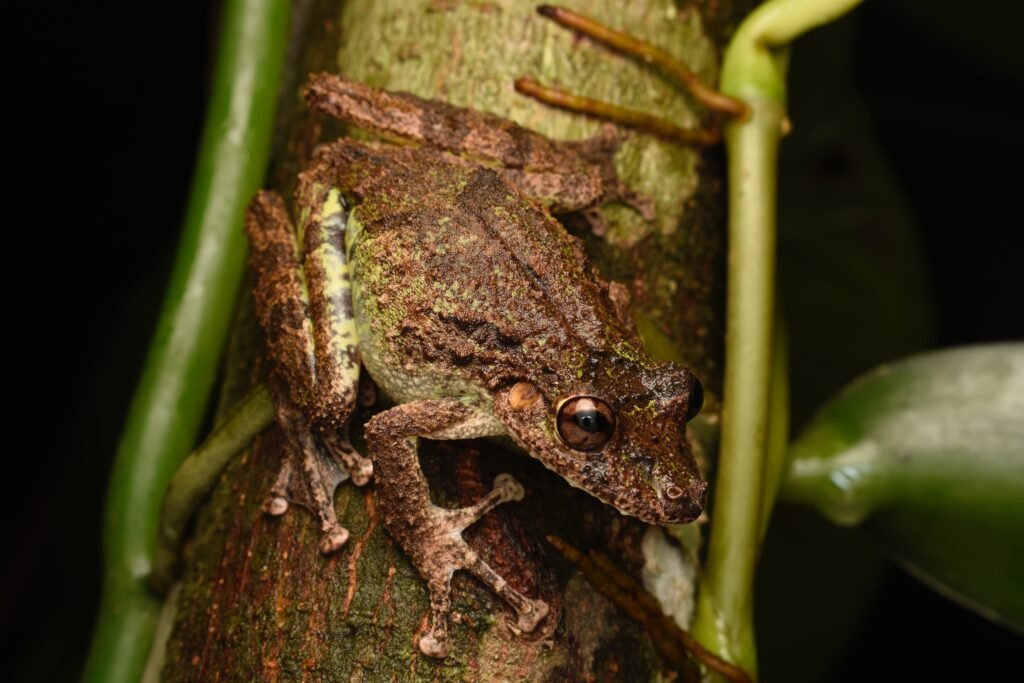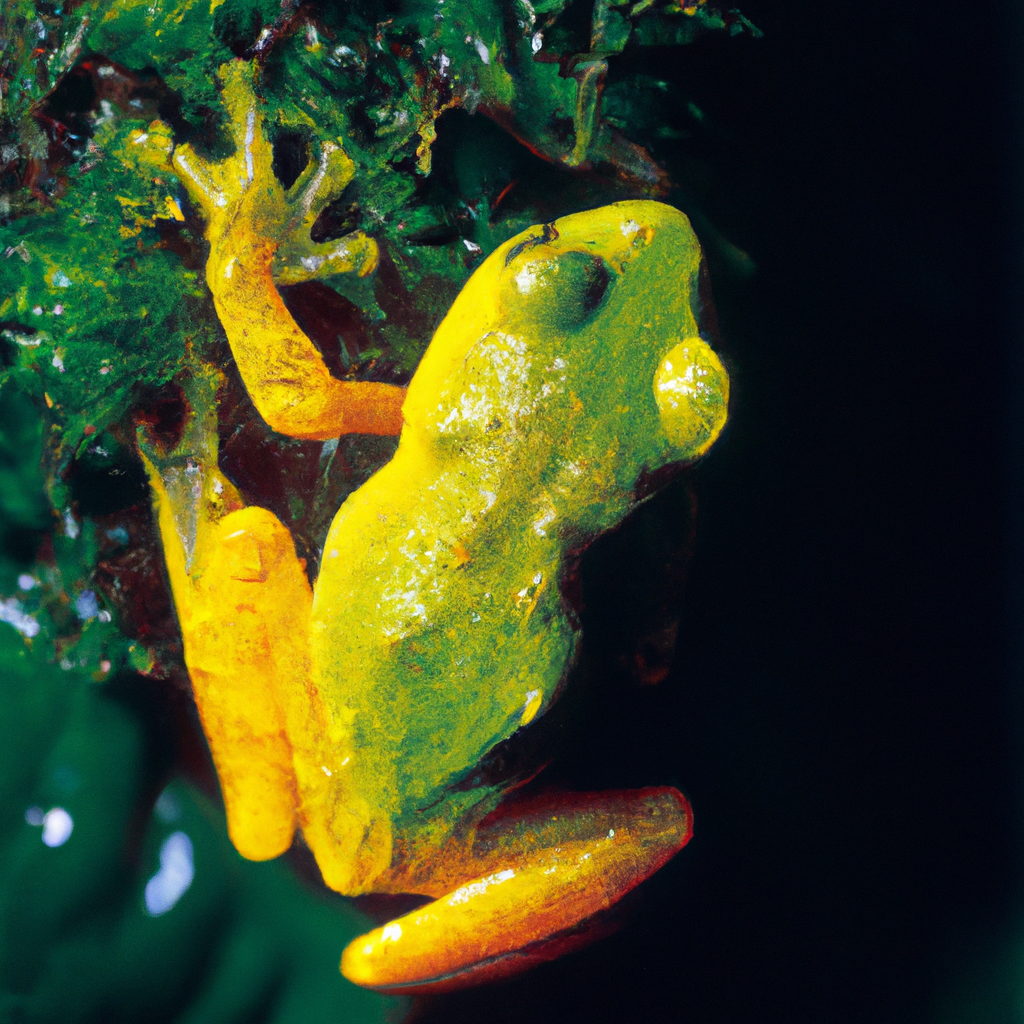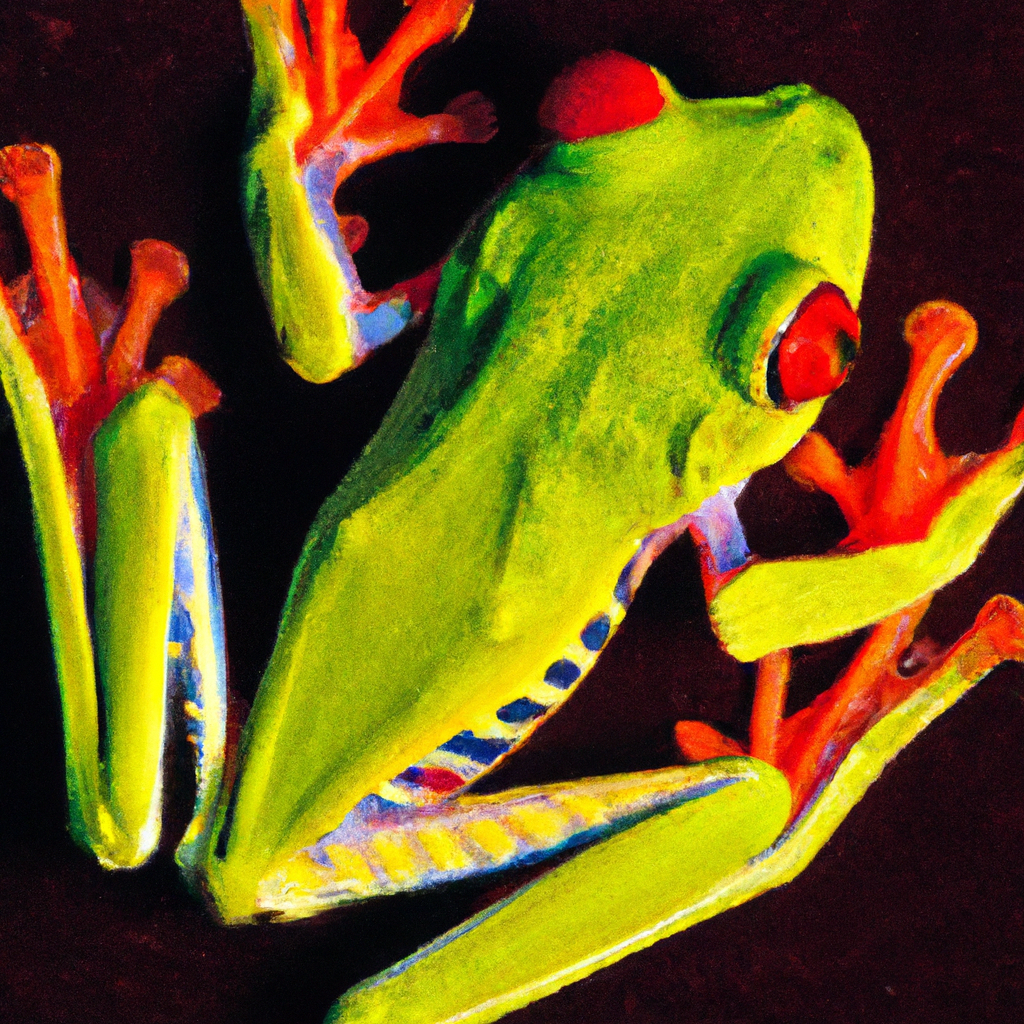Hey there! Are you fascinated by the diverse world of amphibians? Well, you’re in for a treat with this article! In “Biología De Anfibios,” we’ll delve into the captivating world of amphibian biology. From their unique life cycles to their impressive adaptations, we’ll explore the extraordinary features that make these creatures so special. Get ready to embark on an exciting journey into the realm of amphibians!
Classification of Amphibians
Order Anura
The order Anura, commonly known as frogs and toads, is the largest and most diverse order of amphibians. These fascinating creatures are characterized by their strong hind legs, which are adapted for jumping and swimming. Frogs and toads have smooth, moist skin, and they lack a tail as adults. They are found in a variety of habitats worldwide, from tropical rainforests to deserts.
Order Caudata
The order Caudata, also known as salamanders and newts, is a group of amphibians known for their long tails and slender bodies. Unlike frogs and toads, salamanders have four legs of equal size and retain their tail throughout their entire lives. These remarkable creatures have the ability to regenerate lost body parts, including limbs and even parts of their heart and spinal cord. Salamanders and newts are found in diverse habitats, ranging from forests and grasslands to mountains and caves.
Order Gymnophiona
The order Gymnophiona, or caecilians, is a lesser-known group of amphibians that mostly live underground or in aquatic environments. Caecilians resemble large worms or snakes, with elongated, limbless bodies. They have sensory tentacles on their head to help them navigate their surroundings. Caecilians are found in tropical regions, particularly in South America, Africa, and Southeast Asia.
Anatomy and Physiology
Skin and Respiration
One of the most notable characteristics of amphibians is their unique skin, which contains glands that secrete mucus to keep it moist. This moist skin plays a crucial role in respiration, as amphibians are capable of breathing through their skin. Oxygen from the environment diffuses through the skin and into the bloodstream, while carbon dioxide is eliminated in the same way. However, some species also have lungs for respiration.

Circulatory System
Amphibians have a closed circulatory system, which means that blood flows through a series of vessels and does not mix with body fluids. Their heart consists of three chambers: two atria and a single ventricle. This structure allows for some separation of oxygenated and deoxygenated blood, enabling amphibians to be more efficient at obtaining oxygen from their environment.
Digestive System
The digestive system of amphibians is adapted for consuming a wide variety of foods. Their mouth contains specialized structures for capturing and swallowing prey, such as a sticky tongue in frogs and a wide mouth in salamanders. The stomach and intestines help break down food and extract nutrients, while waste is eliminated through the cloaca.
Musculoskeletal System
The musculoskeletal system of amphibians is well-adapted for their diverse locomotion abilities. Frogs and toads have powerful hind legs for jumping and swimming, while salamanders and newts have well-developed limbs for crawling and climbing. The flexibility of their spine allows them to move in various ways, and their skeletal structure provides support and protection for their internal organs.
Nervous System
The nervous system of amphibians consists of a brain, spinal cord, and a network of nerves that extend throughout their body. Amphibians have five basic senses: sight, hearing, taste, smell, and touch. Their brain processes sensory information and coordinates various bodily functions. Some species of amphibians, such as certain frogs, have excellent vision and vocalization abilities, allowing them to communicate and navigate their environment effectively.
Reproduction and Life Cycle

Breeding Behavior
Amphibians have fascinating breeding behaviors that vary among species. Many frogs and toads engage in elaborate courtship rituals involving vocalizations, displays, and physical contact. Male frogs often produce unique mating calls to attract females, while male toads may engage in territorial fighting. Some salamanders and newts exhibit complex courtship dances, where males display their vibrant colors and perform intricate movements to attract a mate. Caecilians have a more secretive breeding behavior, with males depositing a sperm packet for females to pick up.
Fertilization and Development
Most amphibians reproduce through external fertilization, where eggs are fertilized outside the female’s body. After mating, the female lays eggs either in water or moist environments. The eggs are often surrounded by a protective gelatinous substance. In some species, males may guard the eggs or take part in their development. Once the eggs hatch, they often go through a larval stage before metamorphosing into adults.
Metamorphosis
Metamorphosis is a crucial stage in the life cycle of most amphibians. It involves a dramatic transformation from aquatic larvae to terrestrial adults. During metamorphosis, amphibians undergo structural and physiological changes, including the loss of gills and the development of lungs. Limbs grow, the tail may be absorbed, and the digestive system adapts to the new diet of adult amphibians. This transformative process allows amphibians to transition from their aquatic breeding grounds to a terrestrial lifestyle.
Longevity
The lifespan of amphibians varies greatly depending on the species and their environmental conditions. Some species, especially those with a terrestrial lifestyle, have relatively short lives, often ranging from a few months to a couple of years. However, certain species of frogs and salamanders have been known to live for several decades in captivity. Factors such as habitat quality, competition, predation, and disease can influence the longevity of amphibians in the wild.
Habitat and Distribution

Terrestrial Habitats
Amphibians occupy a wide range of terrestrial habitats, including forests, grasslands, deserts, and even urban areas. While some species prefer moist environments, others have adaptations that allow them to thrive in arid regions. Terrestrial amphibians typically rely on their moist skin to prevent dehydration and seek shelter in burrows or under logs to avoid extreme temperatures. They are important contributors to the ecosystem by controlling insect populations and serving as prey for other animals.
Freshwater Habitats
Freshwater habitats, such as lakes, ponds, and streams, are crucial for the survival and reproduction of many amphibians. They rely on these habitats for breeding, as they typically lay their eggs in water. Amphibian larvae, such as tadpoles and larvae of salamanders, are fully aquatic and obtain nutrients from the water. These habitats provide a rich food source and shelter for amphibians, but they are also vulnerable to pollution and habitat destruction, which can have detrimental effects on their populations.
Adaptations to Different Environments
Amphibians have evolved remarkable adaptations to thrive in various environments. For example, some species have developed camouflage to blend in with their surroundings and avoid predators. Others have toxins in their skin that deter predators from eating them. Certain species can tolerate extreme temperatures or hibernate during unfavorable conditions. These adaptations allow amphibians to occupy a wide range of habitats and increase their chances of survival.
Geographical Distribution
Amphibians have a global distribution, with species found on every continent except Antarctica. They are particularly diverse in tropical regions, where warm temperatures and abundant rainfall provide favorable conditions. Rainforests, in particular, are known for their high amphibian biodiversity. However, amphibians can also be found in temperate and even arctic regions. Each geographical area has its unique amphibian communities, characterized by different species and adaptations to local conditions.
Feeding Habits

Carnivorous Amphibians
Many amphibians are carnivorous and feed on a variety of prey, including insects, spiders, worms, and small vertebrates. Frogs and toads are known for their ability to rapidly extend their sticky tongues to capture prey, while salamanders and newts use their jaws to seize and consume prey. Some amphibians have specialized adaptations, such as sticky pads on their fingertips, to facilitate hunting. Carnivorous amphibians play a crucial role in controlling pest populations and contributing to the overall balance of ecosystems.
Herbivorous Amphibians
While the majority of amphibians are carnivorous, some species have adapted to a herbivorous diet. Herbivorous amphibians primarily consume vegetation, such as algae, plants, and fruits. These species often have specialized mouthparts for grazing, such as tooth-like structures or beaks. Herbivorous amphibians serve as important seed dispersers and contribute to plant pollination through their feeding habits.
Omnivorous Amphibians
Certain amphibians have a more flexible diet and are considered omnivorous. They consume a combination of plants, insects, small vertebrates, and other available food sources. These adaptable species can switch between different food sources depending on their availability and nutritional needs. Omnivorous amphibians play a vital role in nutrient cycling within ecosystems by consuming a wide range of organic matter.
Ecological Importance
Predator-Prey Relationships
Amphibians occupy a crucial position in predator-prey relationships within ecosystems. As both predators and prey, they help maintain balance and regulate population numbers. Amphibians consume a variety of invertebrates, including insects and spiders, controlling their populations. They also serve as a food source for various predators, including birds, reptiles, and mammals. Disruptions in amphibian populations can have ripple effects throughout the food web.

Role as Indicators of Environmental Health
Amphibians are often referred to as “canaries in the coal mine” due to their sensitivity to environmental changes. Their permeable skin makes them highly susceptible to pollution, habitat destruction, and climate change. Declining amphibian populations or the presence of deformities can indicate underlying environmental issues, such as water pollution, habitat degradation, or the spread of infectious diseases. Monitoring amphibian populations can provide valuable insights into the health of ecosystems.
Impact on Ecosystems
Amphibians have a profound impact on ecosystems through their feeding habits, nutrient cycling, and role as prey. By controlling insect populations, they help regulate pest species that can have detrimental effects on agriculture and human health. Amphibian waste contributes to nutrient cycling, enriching soils and supporting plant growth. Additionally, their presence in various habitats indicates the overall health and biodiversity of ecosystems.
Amphibian Conservation
Threats to Amphibians
Amphibians face numerous threats that have contributed to their declining populations worldwide. Habitat destruction, including deforestation and urbanization, significantly reduces suitable habitats for amphibians. Pollution from pesticides, fertilizers, and chemical pollutants in waterways poses a serious threat to their survival. Climate change, infectious diseases, invasive species, and overexploitation for the pet trade or traditional medicine are additional factors driving amphibian declines.
Conservation Efforts and Initiatives
Recognizing the urgency of amphibian conservation, numerous efforts and initiatives have been implemented worldwide. These include the establishment and management of protected areas to preserve critical habitats for amphibians. Breeding programs and captive breeding efforts help safeguard endangered species and reintroduce them into the wild. Monitoring programs and research initiatives contribute to our understanding of amphibian ecology and the development of conservation strategies.
Importance of Amphibian Conservation
Amphibian conservation is of paramount importance due to their ecological roles and their worldwide decline. By protecting and preserving amphibians, we safeguard their contributions to ecosystems, including pest control, nutrient cycling, and as indicators of environmental health. Conservation efforts also promote biodiversity and maintain the intricate balance within ecosystems. Furthermore, many amphibians possess unique adaptations and biological compounds that hold potential for medical and scientific advancements.
Amphibians and Human Interaction
Amphibians as Pets
Amphibians, particularly frogs and salamanders, have gained popularity as pets due to their unique appearance and captivating behaviors. However, keeping amphibians as pets requires careful consideration and responsible ownership. They have specific habitat and dietary requirements, and their sensitive skin makes them susceptible to environmental changes. Captive-bred individuals should always be chosen to avoid contributing to the depletion of wild populations. Proper care and adherence to ethical practices are essential for maintaining the well-being and conservation of amphibians as pets.
Amphibians in Research
Amphibians, especially frogs, have been extensively studied in scientific research. Their unique characteristics, such as reproductive strategies, regenerative abilities, and sensitivity to environmental changes, make them valuable models for understanding fundamental biological processes. Amphibians have contributed to advancements in fields such as genetics, developmental biology, and environmental toxicology. However, research involving amphibians must be conducted ethically and with a focus on conservation.
Myths and Legends
Throughout history, amphibians have featured prominently in myths, legends, and folklore from various cultures around the world. They have been associated with transformation, rebirth, and mystical powers. For example, the Japanese folklore includes stories of shape-shifting frog spirits, while Central and South American cultures have revered frogs as rain-bringers and fertility symbols. Amphibians’ unique life cycles and behaviors have inspired human imagination and cultural beliefs for centuries.
Important Amphibian Species
Common Frogs
Common frogs, or European frogs (Rana temporaria), are widespread in Europe and parts of Asia, making them one of the most familiar and well-studied amphibians. They are known for their distinctive green-brown coloration and the ability to produce loud croaking calls during the breeding season. Common frogs play important ecological roles as predators and prey, while also captivating humans with their unique life cycles.
Toads
Toads, of the family Bufonidae, are a diverse group of amphibians known for their dry, warty skin and often terrestrial lifestyle. They are characterized by their short legs and prominent parotoid glands behind the eyes, which secrete toxins as a defense mechanism. Toads can be found in various habitats worldwide, from arid deserts to tropical rainforests. Despite the misconceptions surrounding toads and their toxic secretions, they are beneficial animals that contribute to the health and balance of ecosystems.
Salamanders
Salamanders, of the order Caudata, are a diverse group of amphibians that can be found in a wide range of habitats, from forests to mountain streams. They have elongated bodies, long tails, and four limbs of equal size. Salamanders exhibit a remarkable ability to regenerate lost body parts, making them valuable subjects of scientific research. Some notable species include the axolotl (Ambystoma mexicanum), which retains its larval characteristics into adulthood, and the Chinese giant salamander (Andrias davidianus), one of the largest amphibians in the world.
Caecilians
Caecilians, of the order Gymnophiona, are a unique group of amphibians that largely remain hidden from view due to their underground or aquatic lifestyles. They resemble large worms or snakes, with elongated, limbless bodies. Caecilians are mostly found in tropical regions of South America, Africa, and Southeast Asia. Although less commonly known than frogs or salamanders, caecilians play important roles in their ecosystems through their burrowing activities and interactions with other organisms.
Evolutionary History
Transition from Water to Land
Amphibians played a crucial role in the evolutionary transition from aquatic to terrestrial life. They are considered the first tetrapods, or four-limbed animals, to venture onto land. Fossils of ancient amphibians, such as Tiktaalik and Ichthyostega, provide evidence of anatomical adaptations for terrestrial life, including limbs and stronger skeletal structures. The transition from water to land allowed amphibians to exploit new habitats, leading to the eventual diversification of tetrapods.
Amphibians and the Evolution of Tetrapods
The evolution of amphibians represents an important milestone in the broader context of vertebrate evolution. Amphibians gave rise to reptiles, dinosaurs, birds, and mammals, which adapted to life on land and in the air. Through the study of amphibians, scientists have gained insights into the developmental and genetic mechanisms that underlie important evolutionary transitions. Understanding the evolutionary history of amphibians provides a foundation for understanding the complexity and diversity of life on Earth.
In conclusion, amphibians are a diverse and fascinating group of animals that play crucial roles in ecosystems around the world. From their unique anatomy and life cycles to their important contributions to the environment, understanding and conserving amphibians is essential for maintaining biodiversity and the delicate balance of nature. By appreciating and protecting these remarkable creatures, we can ensure a future where amphibians continue to thrive and inspire us with their resilience and beauty.
